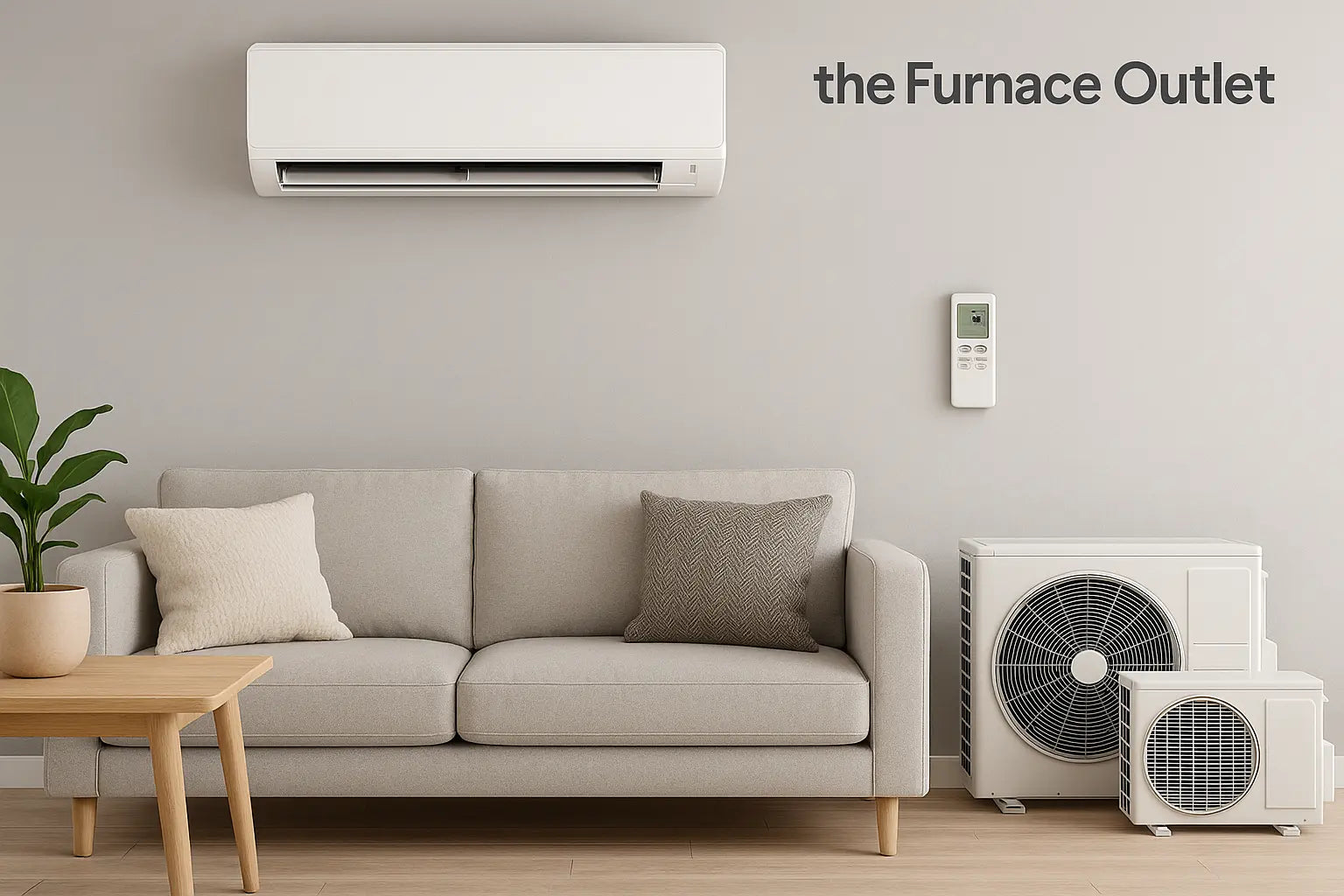As more homeowners seek efficient, flexible, and aesthetically pleasing solutions for indoor comfort, ductless HVAC systems—often called mini-splits—have gained serious traction. These systems offer a modern alternative to traditional heating and cooling setups, eliminating bulky ductwork and bringing customizable climate control to individual rooms.
Shop ductless mini-splits for efficient, zone-by-zone comfort
But while ductless HVAC systems bring undeniable advantages, they’re not without trade-offs. Let’s take a closer look at how they work, what they cost, and whether they’re the right fit for your home.
How Ductless HVAC Delivers Targeted Comfort
Ductless HVAC systems are composed of two primary components: an outdoor condenser and one or more indoor air-handling units. These components are linked by a small conduit that houses power lines, refrigerant tubing, suction tubing, and a condensate drain—requiring just a small opening in the wall.
What makes ductless systems unique is their zoned approach. Instead of heating or cooling your entire home through a single duct system, each indoor unit independently controls the temperature in its own space. This zoning capability means you can keep your bedroom cooler at night, reduce usage in unoccupied rooms, or fine-tune comfort in high-traffic areas—all without conditioning the whole house.
Energy Efficiency That Pays Off
One of the biggest advantages of ductless systems is exceptional energy efficiency. Traditional central HVAC systems often lose up to 30% of energy through leaks or poor insulation in ductwork. Ductless systems eliminate that loss altogether by delivering air directly into the room.
Shop high-efficiency R32 mini-split systems for energy savings ›
Most modern ductless systems use inverter-driven compressors, which adjust their output in real time.
And because you only cool or heat the rooms you're using, you avoid the unnecessary energy costs of conditioning your entire home, which can add up to meaningful savings over time. That said, it’s important to consider the true cost and return over the lifespan of the system.
Understanding the True Cost: Upfront and Ongoing
Ductless systems do come with a higher initial price tag—especially if you're outfitting multiple rooms with individual air handlers. Installation costs vary depending on how many zones you need and the layout of your home.
However, that upfront investment often balances out over the years through:
-
Lower monthly utility bills
-
Minimal duct maintenance or cleaning
-
Fewer repairs due to simplified components
-
Available rebates and tax incentives for energy-efficient upgrades
Over time, these long-term savings can make ductless systems more cost-effective than they initially appear.
Sleek, Minimal Design for Modern Living
From a design standpoint, ductless systems are a clear departure from traditional HVAC setups. Instead of bulky ducts, grilles, and registers, ductless units feature compact, wall-mounted (or sometimes ceiling- or floor-mounted) air handlers. These units are designed with a modern, unobtrusive look that blends into most interiors.
For homeowners who value clean design and efficiency—especially in smaller homes, condos, or additions—ductless systems offer more architectural freedom. There’s no need to compromise between comfort and aesthetics.
Browse DIY-friendly mini-splits designed for quick installs ›
Key Benefits at a Glance
Here’s what makes ductless HVAC systems a compelling option for many households:
-
Energy Efficiency: No ductwork means no duct loss.
-
Zoned Control: Customize temperatures in individual rooms.
-
Flexible Installation: Ideal for retrofits, additions, or homes without ducts.
-
Improved Air Quality: Fewer places for dust and allergens to hide.
-
Low Maintenance: Simple design makes upkeep easier.
Potential Drawbacks to Consider
Like any system, ductless HVAC has its limitations:
-
Higher Installation Cost: Particularly if outfitting multiple rooms.
-
Visible Indoor Units: May not appeal to those wanting hidden HVAC elements.
-
Routine Maintenance: Filters must be cleaned regularly, and professional service is still essential.
Additionally, not every home layout is ideal for ductless systems. Complex, multi-story homes may still benefit from a traditional system—or a hybrid solution combining both.
What to Know Before You Install
Before you commit, there are a few essential planning steps:
-
Proper Sizing Is Crucial: Undersized or oversized units won’t perform efficiently. A professional load calculation will help determine the right capacity.
-
Strategic Placement Matters: Units should be installed where airflow isn’t blocked by furniture or walls.
-
Electrical Requirements: Ductless systems usually need a dedicated circuit, which may require minor electrical upgrades.
Working with an experienced HVAC installer ensures the system is matched correctly to your home and installed for peak performance.
Maintenance That’s Manageable
Maintaining a ductless system is generally simpler than a central HVAC system, but it still requires attention:
-
Clean Filters Monthly: Prevent airflow issues and maintain indoor air quality.
-
Clear the Outdoor Unit: Remove debris and keep the area well-ventilated.
-
Check the Drain Line: Ensure condensate is draining properly to avoid water damage.
-
Schedule Professional Tune-Ups: A yearly inspection can catch small issues before they become big problems.
Regular care extends the life of the system and helps it run at optimal efficiency year-round.
Is a Ductless HVAC System Right for Your Home?
Ductless HVAC systems offer an appealing mix of efficiency, flexibility, and aesthetics—making them an excellent fit for many modern homes. Whether you're upgrading an aging system, renovating a single room, or building a new home, the benefits of zoned comfort and lower energy use can be hard to ignore.
Still, it’s important to assess your specific needs, preferences, and budget. For homeowners who value design simplicity, want to cut energy costs, and appreciate the control of room-by-room comfort, ductless HVAC offers a smart, future-ready solution.
If you’re considering making the switch, consult with a trusted HVAC professional to explore your options and get a tailored recommendation for your space.
Ready to upgrade your comfort and efficiency?
Find the perfect ductless mini-split for your home at The Furnace Outlet







